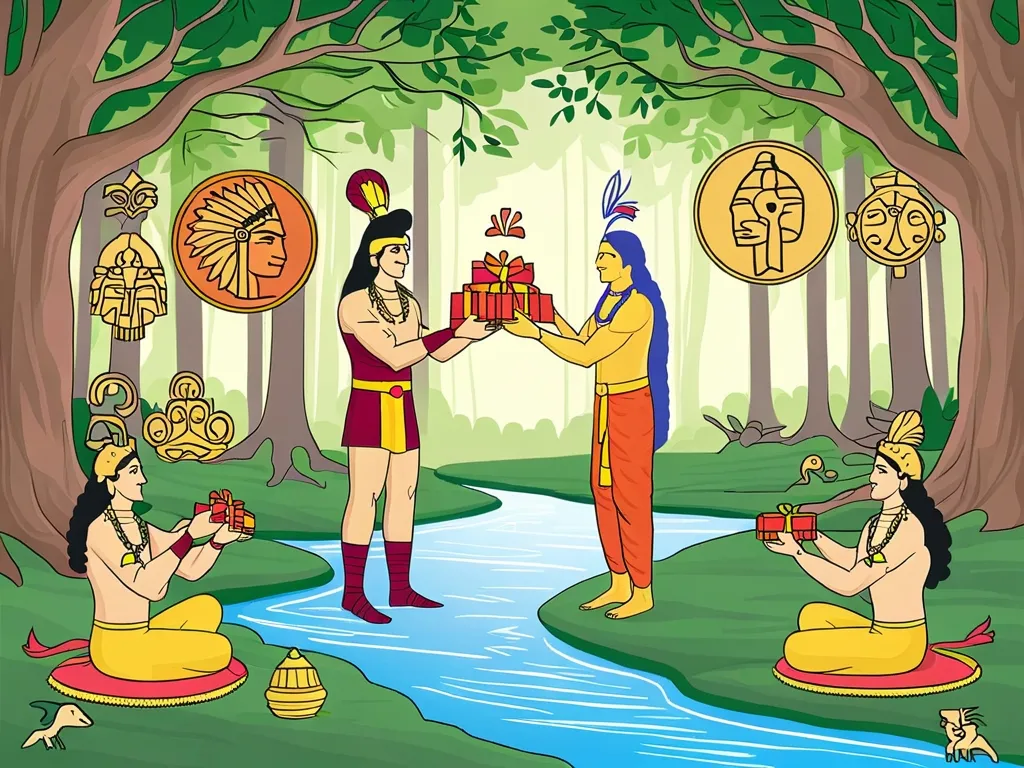In the ancient times of the Dwapara Yuga, there was a legendary king named Shantanu ruling over Hastinapura. His reign was a roller-coaster of joy and sorrow, with one of the biggest highlights being his marriage to Satyavati, a woman with quite the intriguing backstory. Satyavati wasn’t always known by that name; she started life as Matsyagandha, the daughter of a fisherman, and her life was deeply interwoven with destiny.
Satyavati’s unusual story kicked off way before her paths crossed with Shantanu. She was born in the strangest circumstances from a fish that had swallowed the semen of a king named Uparichara. This mishap was all due to a divine curse. When a fisherman caught this peculiar fish, he discovered twin babies inside and decided to raise the girl as his own. Despite her humble beginnings, Satyavati blossomed into a striking woman with a rock-solid sense of duty and loyalty.
Shantanu had once been married to Ganga, but upon catching sight of Satyavati by the river, he was completely smitten. It was love at first sight for him, and he quickly sought her hand in marriage. However, her father, the fisherman, laid down one strict condition: any son born to Satyavati would have to inherit the throne of Hastinapura. This was no small demand, as Shantanu had already promised his son, Devavrata, the throne.
Now, Devavrata, who later earned the name Bhishma, was a remarkable figure with immense integrity and courage. Understanding the fix his father was in, he took a life-altering vow. He gave up his claim to the throne and pledged to remain celibate forever so that none of his offspring would ever challenge Satyavati’s descendants for the throne. This formidable vow earned him the name Bhishma, meaning “the dreadful one.” In return, he was given a special blessing: he could choose the time of his own death.
With this massive sacrifice by Devavrata, Shantanu married Satyavati without any further hiccups. The couple had two sons, Chitrangada and Vichitravirya. Chitrangada, the older one, turned out to be a great warrior and king, ruling with wisdom and strength. But tragically, his rule ended too soon when he was killed in a battle by a powerful celestial musician, also named Chitrangada.
After Chitrangada’s untimely death, Vichitravirya was next in line. However, Vichitravirya was still a kid and needed a lot of guidance. Bhishma stepped up to help out, ruling on his behalf alongside their mother, Satyavati. Vichitravirya, though physically and emotionally frail, carried a strong sense of duty. He married Ambika and Ambalika, daughters of the king of Kashi, whom Bhishma had won for him in a prestigious marriage ceremony called swayamvara.
Despite Vichitravirya’s earnest efforts to fulfill his roles as a king and a husband, his life was cut short too. He fell ill with tuberculosis and passed away without having any children. This put Hastinapura in a pickle, left with no clear heir to the throne, worrying Satyavati and Bhishma immensely. They knew the Kuru dynasty’s legacy had to continue, so they turned to the great sage Vyasa for help.
Vyasa, who happened to be another of Satyavati’s sons through a past encounter with the sage Parashara, agreed to step in. Through a ritual called niyoga, Vyasa impregnated Ambika and Ambalika. Ambika gave birth to Dhritarashtra, who was born blind, while Ambalika gave birth to Pandu, who came out pale and weak. A maid servant also gave birth to Vidura, who was an incarnation of Yama, the god of death.
In this way, the Kuru dynasty’s lineage was secured through Dhritarashtra and Pandu, who would go on to be key players in the epic narrative of the Mahabharata. The stories of Chitrangada and Vichitravirya remind us how fate has its own way of weaving tales full of glory and heartache, yet their legacies lived on through their descendants.
Ultimately, it wasn’t just the sons of Shantanu and Satyavati who shaped Hastinapura’s destiny, but also Bhishma’s unwavering dedication and Vyasa’s wisdom. Their sagas blend together into the rich, elaborate tapestry of the Mahabharata, underscoring the timeless power of love, loyalty, and sacrifice.






